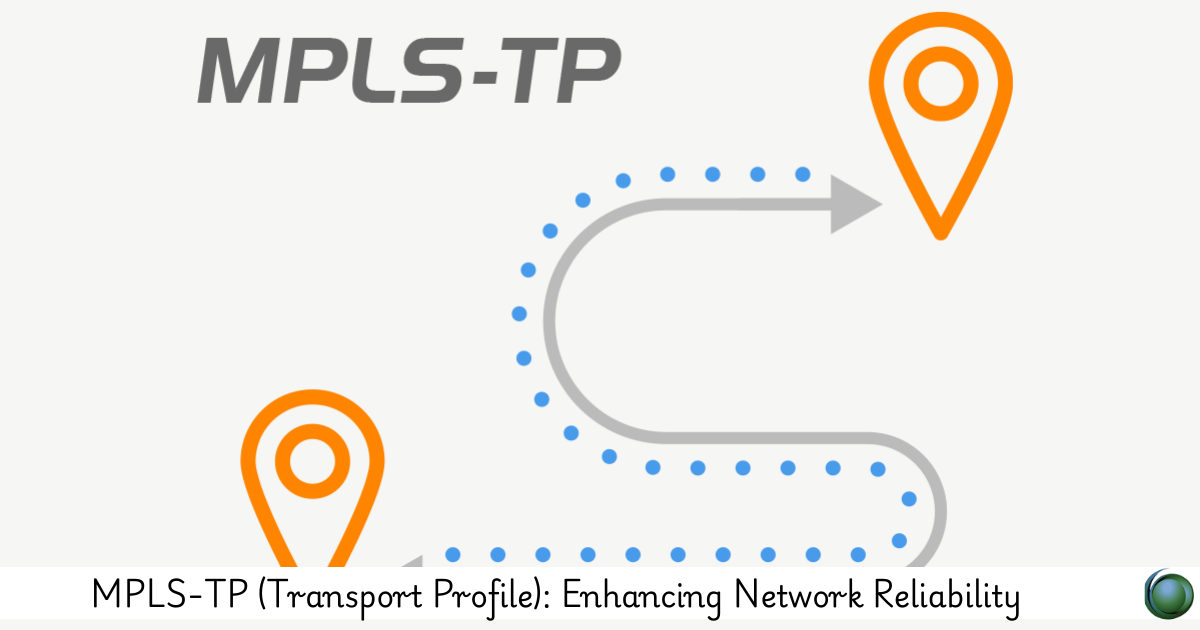Description
Introduction of MPLS-Transport Profile
MPLS-TP (Multiprotocol Label Switching – Transport Profile) is an extension of MPLS designed specifically for transport networks. It addresses the need for high-reliability, efficient, and scalable networking solutions that are crucial for carrier-grade and mission-critical services. MPLS-TP is particularly suited for applications requiring stringent service-level agreements (SLAs) and robust fault management, making it ideal for Metro Ethernet, backbone, and telecom networks. This MPLS-Transport Profile course explores the key concepts, its architecture, use cases, and its role in enhancing network reliability by providing improved fault detection, protection mechanisms, and network resiliency.
Prerequisites
- Basic understanding of MPLS and networking protocols.
- Familiarity with Ethernet, IP, and telecommunications networks.
- Prior knowledge of network performance requirements and SLAs.
- Experience in networking or telecommunications is beneficial.
Table of Contents
1. Introduction to MPLS-TP
1.1 What is MPLS-TP?
1.2 Key Differences Between MPLS and MPLS-TP
1.3 Overview of MPLS-TP Features and Benefits
1.4 Applications and Use Cases of MPLS-TP
2. MPLS-TP Architecture and Components
2.1 MPLS-TP Network Elements
2.2 MPLS-TP Label Switching
2.3 MPLS-TP Operations, Administration, and Maintenance (OAM)
2.4 Fault Detection and Performance Monitoring in MPLS-TP
3. MPLS-TP Circuit and Service Protection Mechanisms
3.1 Overview of Protection Techniques in MPLS-TP(Ref: MPLS for Cloud Connectivity and Hybrid Networks)
3.2 Fast Reroute and Restoration Methods
3.3 Linear and Ring Protection Architectures
3.4 MPLS-TP and Service-Level Agreement (SLA) Guaranteeing
4. MPLS-TP for Carrier Ethernet Networks
4.1 Role of MPLS-TP in Carrier Ethernet
4.2 MPLS-TP in Metro Networks
4.3 Ensuring Network Reliability in Carrier Ethernet with MPLS-TP
4.4 Implementing Traffic Engineering in MPLS-TP-based Ethernet Networks
5. MPLS-TP and Network Resilience
5.1 Building Resilient Networks with MPLS-TP
5.2 Enhancing Network Availability through MPLS-TP Resiliency Features
5.3 Protection Switching and Fault Recovery in MPLS-TP Networks
5.4 Case Studies on MPLS-TP-based Network Resilience
6. MPLS-TP in Service Provider Networks
6.1 Benefits of MPLS-TP for Service Providers
6.2 Integration of MPLS-TP with Existing IP/MPLS Infrastructure
6.3 MPLS-TP for Multi-Service Provisioning in Service Provider Networks
6.4 Service Level Management and Fault Isolation
7. Advanced MPLS-TP Operations and Troubleshooting
7.1 Advanced OAM Features in MPLS-TP
7.2 Performance Monitoring in MPLS-TP Networks
7.3 Fault Diagnosis and Troubleshooting Techniques
7.4 MPLS-TP Test and Verification Tools
8. Case Study: Implementing MPLS-TP for High-Reliability Networks
8.1 Scenario Overview and Requirements
8.2 Design and Implementation of an MPLS-TP-based Solution
8.3 Overcoming Challenges in MPLS-TP Network Deployment
8.4 Performance Analysis and Results
9. Future Trends in MPLS-TP and Transport Networks
9.1 Evolution of MPLS-TP and Emerging Technologies
9.2 MPLS-TP vs SDH/SONET in Modern Networks
9.3 Hybrid Network Architectures Combining MPLS-TP and SD-WAN
9.4 The Role of MPLS-TP in 5G and Next-Generation Networks
10. Conclusion of MPLS-Transport Profile
10.1 Summary of Key Takeaways
10.2 The Importance of MPLS-TP for Network Reliability
10.3 Best Practices for MPLS-TP Deployment and Network Optimization
10.4 Preparing for Future Transport Network Demands
MPLS-TP enhances the reliability, scalability, and fault tolerance of transport networks, making it ideal for carrier-grade services and mission-critical applications. By offering advanced protection mechanisms, network resiliency, and efficient performance monitoring, MPLS-TP is crucial for maintaining high-quality service delivery in modern telecom and Ethernet networks. This course has equipped participants with the skills to design, implement, and troubleshoot MPLS-TP-based solutions that ensure optimal performance and network reliability. Understanding MPLS-TP’s unique features and its integration with other network technologies will empower engineers to deliver resilient network infrastructures for future growth and innovation.







Reviews
There are no reviews yet.